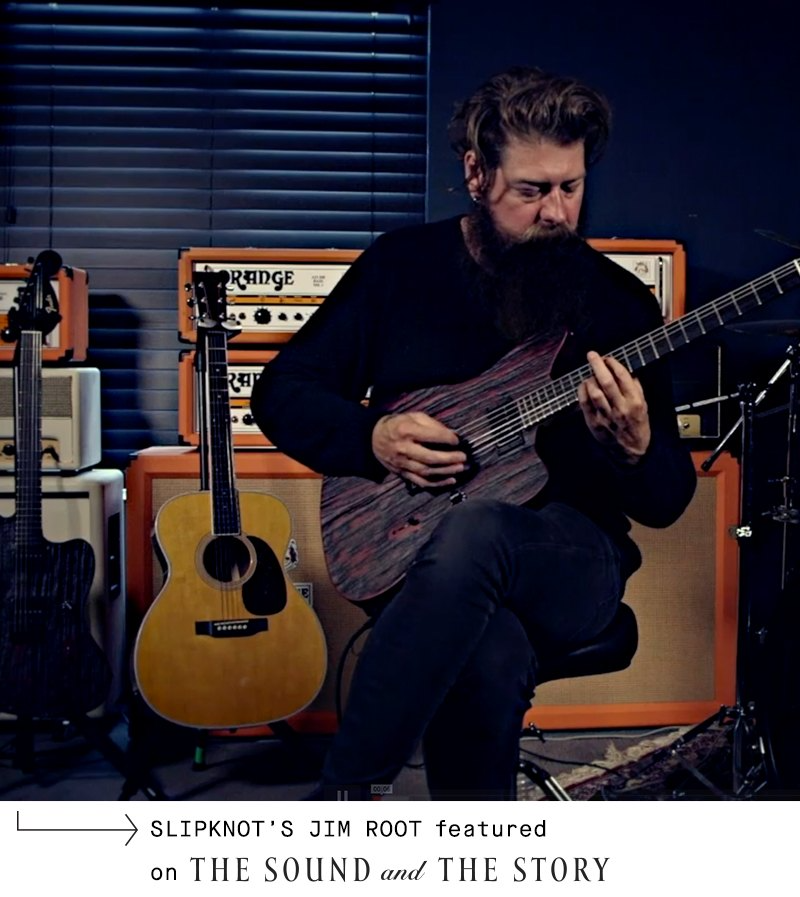Orange oranges are indeed orange. But what does Orange sound like?
Orange is a fascinating word. It’s a noun, but it also happens to be an adjective that can also describe itself. That’s all well and good, but how does this versatile word sound? Sweet, tart, tangy, refreshing? We can all picture how orange looks, tastes and smells. But does this colorful word have a sound? Thankfully, we have answers thanks to YouTuber Rhett Schull and the fine amp-builders and engineers overseas at Orange Amplification.
When you think of a wall of Marshall amps, a certain sound comes to mind. Similarly, when you see a backline with a wall of Mesa/Boogies, your inner ear will instantly conjure that California sound. For many players, especially the old-schoolers out there, the holy trifecta of amps that every guitarist should own is as follows: Fender, Marshall, and Vox. Personally, we think there are a few other brands and tonal styles that also deserve a seat at the holy table of tone, and Orange is most certainly one of them.
Amps play a unique role in the search for the perfect sound. In fact, you could make a case for amplifiers being arguabley more important than the actual guitar. You can make many guitars sound quite like many other guitars, yet it can be VERY hard to make one amp sound like another. Could you picture a Metallica riff played through a Fender Princeton? Or a Van Halen riff played through a Roland Jazz Chorus? What about a Periphery song through a Vox AC30? We don’t think that would djent very well. We might also wager that a Beatles or Stones tune might just sound a bit strange if played through a Bogner Uberschall or Randall Satan. Amps and their passionate builder/designers have quite literally shaped and changed the course of music history.
Despite many claiming Fender, Marshall and Vox as the holy-trifecta of amps, Rhett makes the case for Orange as one of the often-overlooked heroes of the last five decades. Orange’s claim to fame is their unique sound - "these amps don’t really sound like anything else out there.”
In the late 1960’s, Cliff Cooper opened a guitar shop and recording studio in London called “The Orange Shop.” This shop doubled as both a studio for bands to record music as well as a workplace for Cliff, who was cutting his teeth creating his own small transistor amps so that guitarists of the time could jam on a pair of headphones. (Pretty cutting edge, right?) The London store had an extremely difficult time becoming a supplier for Marshalls, Gibsons, and Fenders, so Cooper had to sell off his band’s own gear to pay rent to keep the doors open. These tough times caused the shop to get creative in sourcing the sought-after “older” gear that musicians were craving, which eventually led to the shop becoming a go-to destination for musicians in London.
But even in those days, “used” gear was hard to come by, and this gear shortage led Cooper and his team to start designing and building gear of their own. Cliff Cooper teamed up with hi-fi amp builder Mat Mathias of Radiocraft. These early amps were actually “too” pure and lacked a lot of the characteristics that guitarists wanted like loudness and distortion, so the team continued revising until they had what we now know as the Matamp. Yes, THAT legendary Matamp that was played by Jimmy Page, Peter Green, and Paul Kossaff.
This early amp showed that Orange was not quite like the rest. They were shaped differently, colored differently, had different knobs, and sure as hell didn’t sound like the rest. In the video, you’ll hear and see some great history and tales behind this now-famous company. Most importantly, however, you’ll get to hear Rhett perform some serious guitar goodness in Rick Beato’s Atlanta studio as he demonstrates what many consider to be the quintessential “Orange sound” on some real-deal vintage Orange heads before taking things to his home studio where he demos his very own Gibson-era Orange AD30. Grab your favorite headphones or turn up some good speakers, because this video is chock-full of amazing guitar tone that needs to be heard in full detail to be fully appreciated.
And as the golden ears of guest star Rick Beato surmise: “[The Orange sound] has more mids than a Marshall does, and has a different type of mids than a Vox.” So, while you’ll get a chance to hear some classic vintage examples of “the Orange sound” in the video, we would be remiss not to mention that the company is still around and expanding their sound palette immensely - creating all sorts of new sounds! Many of these sounds can be heard on several of our “The Sound & The Story” guitar instructional videos. If you’d like to hear some of our FRET12 artists jamming on some gnarly Orange gear, check out Jim Root of Slipknot and Brent Hinds & Bill Kelliher of Mastodon to hear even more examples of how great these pieces of gear sound when used by modern professional musicians.

Editor’s note: While enjoying this great video about the sound of Orange Amps, make sure to take a look behind Rhett and you’ll see a Divided by 13 amp, very similar to the “ABIII” amp we had here in our shop recently!









